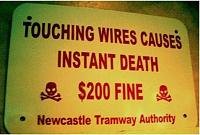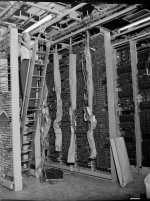rons
Diamond
- Joined
- Mar 5, 2009
- Location
- California, USA
Got a SMC pressure switch that can take 12-24VDC.
Got two small relays (DIP size) that have to control 2 larger relays. These are in 12 or 24VDC.
Got two larger relays to switch 120VAC to two ASCO drain valves. These are in 12 or 24VDC.
The issue with the drain valves as stated from one of their people: Only the 120VAC ASCO valve can withstand up to 150PSI.
This requires me to use 120VAC valves. Requires me to work backwards.
Background:
A control box I'm building will make it possible to open water drain ports at the best time. Rather than using a simple timer.
There is a 50' copper wound coil on the left side and at the bottom is a water collection filter that I made. Now no more water
coming out from the main tank. In the past it was like a water faucet. The pressure at the drain is only there while a charge is taking place,
and about 30 seconds for the air to bleed out of the 50 foot 5/8 copper tube coil (un-loader operation). So a smart timer is needed.

The control will mount in a box on that flat plate by the motor.
I replaced the mechanical pressure with a digital SMC pressure switch. I have it connected to a port on the top of the tank, with a 90 degree bend on the connecting tube. Can read the display easier.
Sometimes the motor would be switched on/off rapidly at the end of a cycle with the old switch.

Decision:
Is 24VDC the most common control voltage?
Or is 12VDC?
It doesn't probably have to be regulated that well. But as a habit I like to regulate and protect.
Got two small relays (DIP size) that have to control 2 larger relays. These are in 12 or 24VDC.
Got two larger relays to switch 120VAC to two ASCO drain valves. These are in 12 or 24VDC.
The issue with the drain valves as stated from one of their people: Only the 120VAC ASCO valve can withstand up to 150PSI.
This requires me to use 120VAC valves. Requires me to work backwards.
Background:
A control box I'm building will make it possible to open water drain ports at the best time. Rather than using a simple timer.
There is a 50' copper wound coil on the left side and at the bottom is a water collection filter that I made. Now no more water
coming out from the main tank. In the past it was like a water faucet. The pressure at the drain is only there while a charge is taking place,
and about 30 seconds for the air to bleed out of the 50 foot 5/8 copper tube coil (un-loader operation). So a smart timer is needed.

The control will mount in a box on that flat plate by the motor.
I replaced the mechanical pressure with a digital SMC pressure switch. I have it connected to a port on the top of the tank, with a 90 degree bend on the connecting tube. Can read the display easier.
Sometimes the motor would be switched on/off rapidly at the end of a cycle with the old switch.

Decision:
Is 24VDC the most common control voltage?
Or is 12VDC?
It doesn't probably have to be regulated that well. But as a habit I like to regulate and protect.
Last edited:









